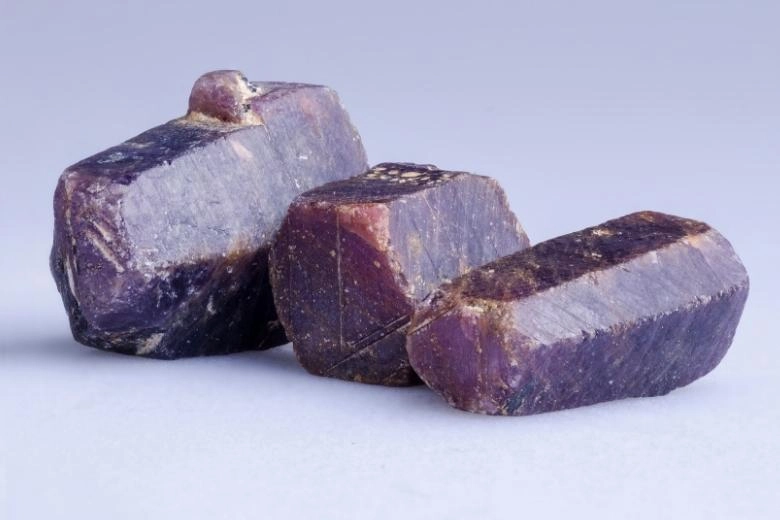Corundum, a remarkable mineral, holds significant importance in the field of earth sciences. This article aims to provide a detailed understanding of the corundum formula and structure, shedding light on its chemical composition, crystal structure, and various varieties.
Genesis of Corundum
Corundum crystallizes in settings abundant in aluminum and deficient in silica. Its formation is prominent within lightly colored igneous structures like desilicated pegmatites, syenites, and nepheline syenites. Moreover, it frequently asserts its presence as an accessory mineral across various metamorphic rocks, originating from aluminous or carbonate sediments. Among its notable sources, crystalline limestones, marbles, mica schists, and gneisses hold substantial quantities.
The Formula and Structural Intricacies
Boasting the chemical formula Al2O3, pure corundum is a rarity in the natural world, exuding an inherent colorlessness. However, its structure welcomes substitution by trace amounts of metallic elements such as chromium (Cr), iron (Fe), and titanium (Ti) in lieu of aluminum. This unique capability leads to a spectrum of color variations, making corundum not just an object of scientific interest but also a cherished gemstone. The molecular framework of corundum is characterized by C-B-C chains and B12 icosahedra, attributing to its robustness and might in the mineral kingdom.
Diverse Varieties of Corundum
Corundum's portfolio is richly adorned by gems like rubies and sapphires, each bearing distinct hues and historical prestige:
- Ruby
Deriving its nomenclature from the Latin "Ruber" signifying red, rubies showcase a spectrum from pinkish red to a profound red. The presence of chromium impurities gifts rubies their celebrated color. - Padparadscha Sapphire
A rare and aesthetically prized variety, the Padparadscha sapphire, owes its unique orange-pink hue to the combined influence of iron and chromium. - Sapphire
Encompassing a broad range of colors excluding red, sapphires get their name from the Latin "Sapphires." Their colors, spanning across the spectrum, owe their existence to the amalgamation of iron (Fe2+, Fe3+) and titanium (Ti4+) inclusions. - Emery
A mass variant manifesting in black, emery's coloration stems from a mix of magnetite, hematite, and spinel components, marking its utility beyond aesthetics.
Utility and Reverence
Corundum's reach extends far beyond gemstones. It plays a pivotal role as an abrasive - synthesized primarily from bauxite - and finds applications in various electrical components utilizing non-gem quality material. Historical narratives recount the mineral's extensive use in refining steel, polishing optics, and even in locomotive engineering, signifying its embeddedness in industrial evolutions.
Significance and Uses
Corundum holds immense significance in various fields due to its exceptional hardness, toughness, and stability. Its applications include: Gemstone: Corundum, particularly ruby and sapphire, has been valued as gemstones for thousands of years. These gem-quality corundum specimens are highly sought after for their beauty, durability, and symbolic meaning. Abrasive: Corundum is widely used as an abrasive material. Synthetic corundum, manufactured from bauxite, serves as an abrasive in applications such as grinding, cutting, and polishing. Electrical Uses: Non-gem-quality corundum finds applications in certain electrical components and insulating materials.
Conclusion
Corundum, with its chemical formula Al2O3 and unique crystal structure, is a very important and widely used mineral. Through this article, we explore the composition and structure of corundum, delve into its various varieties and unique characteristics, as well as the significance of corundum as a gemstone and abrasive material.
